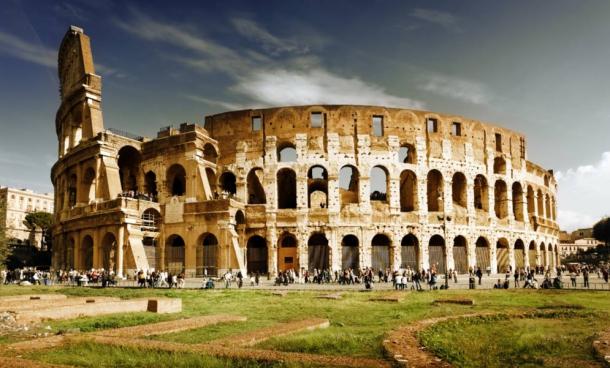Ancient Rome’s concrete recipe is an impressive feat in architectural history. Some Roman buildings are so spectacular in their construction and beauty that modern builders would never attempt something similar, even with today’s technology. Now engineers are beginning to understand why ancient Roman concrete was so revolutionary.
Rome built many of its buildings and monuments with concrete made of lime, volcanic sand, and volcanic rock. The ancient Romans’ buildings and structures, some of the most spectacular in the world, have withstood chemical and physical onslaught for 2,000 years and are still standing.
Previous research has already found that Roman concrete was far superior to our own modern concrete, which is made to endure about 120 years. It’s been known for a while that the volcanic sand used in Roman concrete and mortar made their buildings last for so long. Now a new study by a group of engineers and engineering researchers has discovered the precise recipe that made the Roman concrete endure much longer than concrete used today.
The researchers used an ancient recipe written down by Roman architect Vitruvius to mix a batch of mortar. The engineers let it harden for six months and looked at it with microscopes. They found that clusters of a dense mineral form through the Roman process. These strätlingite crystals, formed by the volcanic sand as it binds with limestone, prevented the spread of cracks by reinforcing interfacial zones. Interfacial zones are weak links inside the concrete.
It isn’t just that Roman concrete is more lasting. It is also not as bad for the environment in the manufacturing of it because the mix only needed to be heated to 900 Celsius as opposed to the 1,450 of modern concrete.
“Stronger, longer-lasting modern concrete, made with less fuel and less release of carbon into the atmosphere, may be the legacy of a deeper understanding of how the Romans made their incomparable concrete,” Ancient-Origins.net wrote in 2013. Heating the limestone in 19 billion tons of Portland cement made annually accounts for 7 percent of human-released carbon into the atmosphere, according to the new study.
Rome is situated between two volcanic regions, Monti Sabatini to the north and the Alban Hills to the south. When Augustus became the first emperor of Rome in 27 AD, he initiated a building campaign. After builders settled on using Pozzolonic ash from the Alban Hills’ Pozzolane Rosse ash flow, Augustus decreed that Pozzolonic mortar be the standard in Roman buildings. That decision cemented Rome’s enduring architectural legacy. Roman architects found that this mortar substantially improved the margin of safety in buildings, which were becoming more daring in their design.
The prototypical example of this may be the awe-inspiring Roman Pantheon, a huge concrete building capped by 142-foot dome. It was built in the second century AD.
“Made entirely out of concrete, without the reinforcing support of structural steel, no modern engineer would dare attempt such a feat, says David Moore, author of The Roman Pantheon: The Triumph of Concrete. ‘Modern codes of engineering practice would not permit such mischief,’” Smithsonian.com says.
